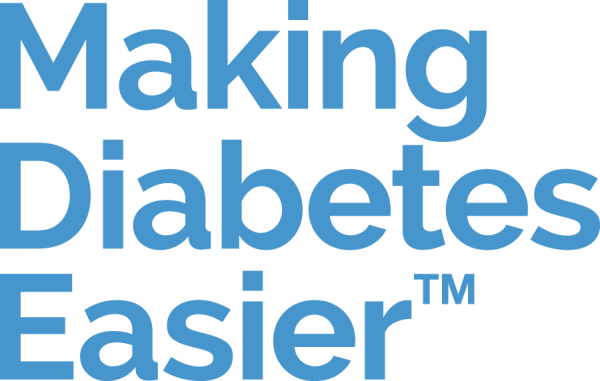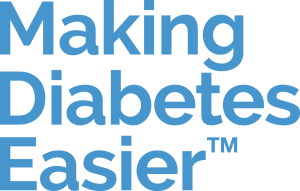Prediabetes: What to know and what to do

Everything you need to know about prediabetes
Prediabetes is a serious condition that can act as a precursor for a type 2 diabetes diagnosis [1, 2, 3]. Fortunately, however, the condition may also be preventable and treatable with the right management plan [2, 3].
In this guide, we answer a variety of questions on prediabetes, including what it is, what causes it, who might develop it and what you can do to prevent its onset.
If you’ve already been diagnosed with prediabetes, try not to let your diagnosis overwhelm you [3]. As you will find out later on in this guide, prediabetes can be managed or even reversed by making the right lifestyle changes [3].
What is prediabetes?
Prediabetes occurs when your blood glucose levels are elevated to a higher level than normal, but not enough to qualify for a type 2 diabetes diagnosis [2, 4].
Left untreated, living with this condition can not only increase your risk of eventually developing type 2 diabetes, but it can also increase your likelihood of other health conditions like cardiovascular disease and stroke [2].
Prediabetes is also sometimes referred to as [5]:
- Impaired fasting glucose
- Impaired glucose tolerance
- Borderline diabetes
Approximately 70% of people who have prediabetes go on to develop type 2 diabetes, but that doesn’t have to be the case [2]. When managed in the right way, the condition can be treatable and, in some cases, even reversible [3].
How is prediabetes diagnosed?
Prediabetes is diagnosed with a blood test that measures your blood glucose [2]. Several types of blood tests are available to do this, including [2]:
- The fasting blood glucose test – this is usually performed overnight to measure your blood glucose levels after fasting for 8 – 12 hours [2, 5].
- The two-hour glucose tolerance test – also known as an oral glucose tolerance test (OGTT), this measures how well your body uses glucose over a specific time [2, 5]. Following an 8–12 hour fasting period, you will have your blood glucose level measured. You will then be given 75g of a sugary drink, before having your blood glucose measured again approximately 2–3 hours later [2, 5].
- The glycated haemoglobin test – also known as the haemoglobin A1C or the HbA1c test), this blood test measures your average blood glucose levels over the last 2–3 months [2, 4, 6].
What causes prediabetes?
Prediabetes is caused when the cells in your body do not respond well to insulin [7, 8]. In response to this insulin resistance, your pancreas needs to produce more insulin to keep your blood glucose in range [2, 8].
However, having more insulin in your body makes your insulin receptors even less sensitive to insulin, contributing to a vicious cycle: the body produces more and more insulin while becoming less and less receptive to it [2].
Over time, your pancreas will gradually become unable to produce enough insulin to keep up, leading to the onset of prediabetes or type 2 diabetes [2, 8].

What causes prediabetes?
Risk factors for prediabetes
Certain risk factors can raise your chances of developing prediabetes [2]. While some of these, like your age or ethnicity, can’t be changed, others can. So, it’s good to be aware of what you can do to help prevent the condition [4].
Some of the risk factors for prediabetes that you cannot change include [1, 2]:
- Being of an ethnicity other than white [1]
- Having a history of diabetes during pregnancy (also called gestational diabetes)
- Being a female with polycystic ovarian syndrome (PCOS)
- Having a family history of type 2 diabetes (parents or sibling)
- Having a history of cardiovascular disease
- Being of an older age [7]
However, some of the risk factors for prediabetes that you can change include [2]:
- Being overweight or obese
- Being physically inactive
- Having high blood pressure
- Having dyslipidemia, or an imbalance of lipids in the blood, with low levels of HDL cholesterol
- Smoking [7]
What are the symptoms of prediabetes?
Typically, prediabetes does not cause any clear symptoms, so it’s possible to have the condition, or some of its associated complications, without even knowing [2, 3]. That’s why it’s so important to get tested for prediabetes and consult your doctor if you think you may be at risk [2, 3].
That said, however, a small minority of people with prediabetes do present with symptoms, often similar to the symptoms of diabetes. These typically include [2, 9]:
- Losing weight (or gaining weight) without trying
- Unusually high appetite
- Weakness or fatigue
- Blurred vision
- Wounds or bruises that take longer to heal
- Skin infections or bleeding gums that won’t heal
- Feeling very thirsty [9]
- Urinating more often [9]
Can you prevent prediabetes? If so, how?
Prediabetes is a preventable condition and by making some of the lifestyle changes listed below, you can help keep the risk of prediabetes at bay [2]:
- Maintain a diet rich in fibre
- Exercise regularly
- Lose weight
- Quit smoking
Sticking to the medications your doctor has prescribed (if any) is also key, as is maintaining a good level of communication with your healthcare professional [2].
While it’s also important for your doctor to educate you on how to adopt a healthier lifestyle and prevent prediabetes, it’s equally important for you to ask questions and action to their advice [2, 3].
What can you do if you already have prediabetes?
If you’ve been diagnosed with prediabetes, the good news is you can stop it from progressing or even reverse it by making a few small lifestyle changes [2, 3].
Having prediabetes doesn’t necessarily mean you’ll develop type 2 diabetes [3]. Eating healthily and exercising more often can go a long way towards managing or even reversing this condition [3]. So, why not speak to your healthcare professional about creating a diet and exercise plan that suits your lifestyle? [3].
In some cases, you may also need to take medication to keep your blood glucose within range [2]. However, this is really only in the case of failing to make lifestyle changes and being at high risk of developing type 2 diabetes [2].
For this reason, you should attend regular health checks with your doctor, and get your blood glucose checked every 1 to 2 years after receiving your prediabetes diagnosis [2]. That way, they’ll be able to monitor your condition and offer useful advice [2].
Prediabetes is an often symptomless precursor of type 2 diabetes, which is why prevention and regular testing are key [2]. If you’ve already been diagnosed with prediabetes, don’t feel disheartened – remember that with the right lifestyle changes, you can manage or even fully reverse your condition [3].
Sources:
- Perreault L. Prediabetes. [Updated 2022 Mar 3]. In: Feingold KR, Anawalt B, Blackman MR, et al., editors. Endotext [Internet]. South Dartmouth (MA): MDText.com, Inc.; 2000-. Available from: https://www.ncbi.nlm.nih.gov/books/NBK538537/
- Alvarez S, Coffey R, Algotar AM. Prediabetes. [Updated 2023 Jul 17]. In: StatPearls [Internet]. Treasure Island (FL): StatPearls Publishing; 2023 Jan-. Available from: https://www.ncbi.nlm.nih.gov/books/NBK459332/
- ADA, Prediabetes, Accessed 21/12/2023. Available at: https://diabetes.org/about-diabetes/prediabetes
- Bansal N. Prediabetes diagnosis and treatment: A review. World J Diabetes. 2015;6(2):296-303. doi:10.4239/wjd.v6.i2.296, https://www.ncbi.nlm.nih.gov/pmc/articles/PMC4360422/
- American Diabetes Association (ADA), About diabetes - Common terms, https://diabetes.org/about-diabetes/common-terms
- Juvenile Diabetes Research Foundation (JDRF), HbA1c blood tests and type 1 diabetes, Accessed 21/12/2023. Available at: https://jdrf.org.au/hba1c-blood-tests/
- Khan RMM, Chua ZJY, Tan JC, Yang Y, Liao Z, Zhao Y. From Pre-Diabetes to Diabetes: Diagnosis, Treatments and Translational Research. Medicina (Kaunas). 2019;55(9):546. Published 2019 Aug 29. doi:10.3390/medicina55090546, https://www.ncbi.nlm.nih.gov/pmc/articles/PMC6780236/
- ADA, Understanding Insulin Resistance, Accessed 21/12/2023. Available at: https://diabetes.org/health-wellness/insulin-resistance
- ADA, Diabetes Symptoms, Accessed 21/12/2023. Available at: https://www2.diabetes.org/diabetes/type-2/symptoms

